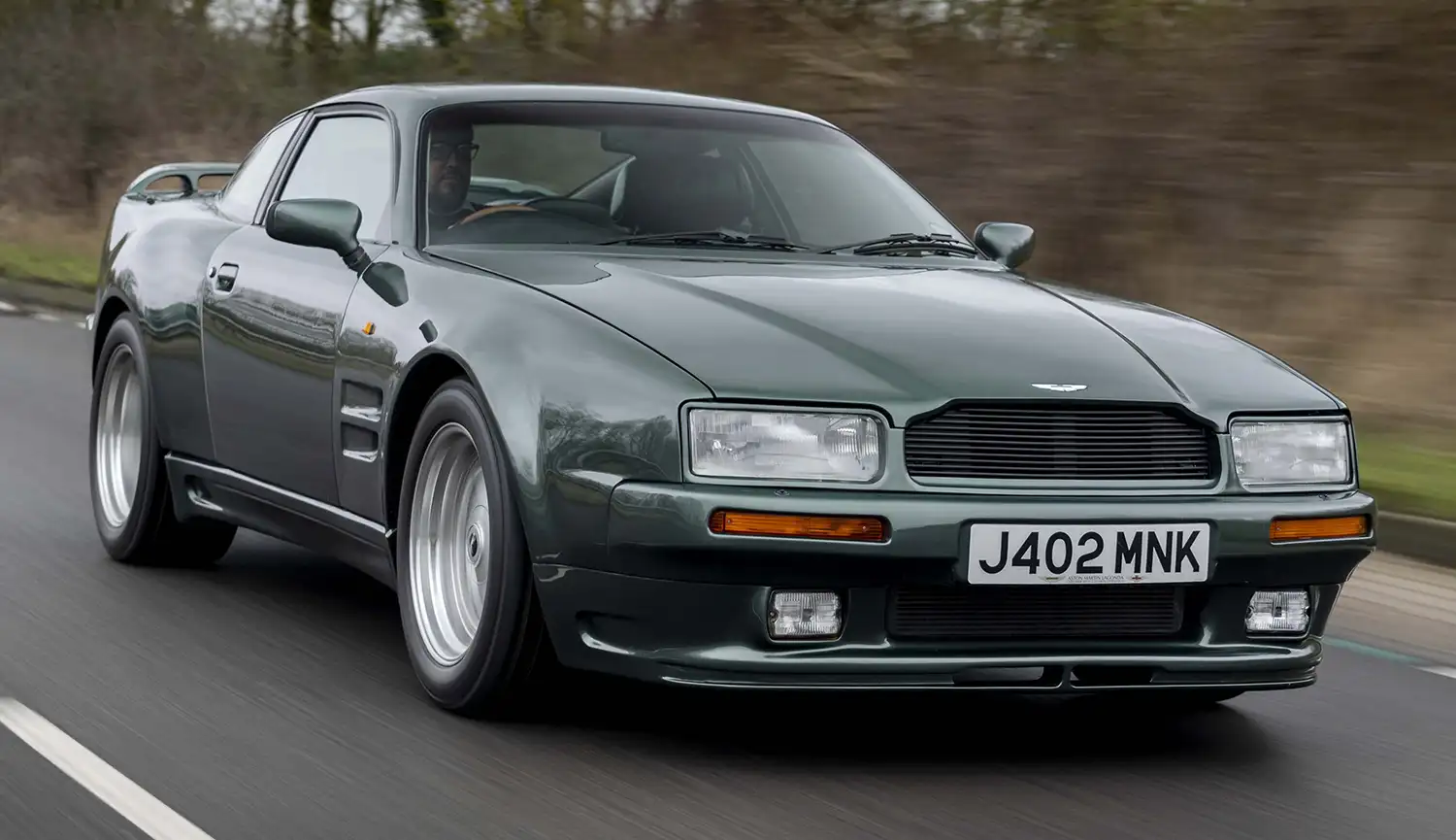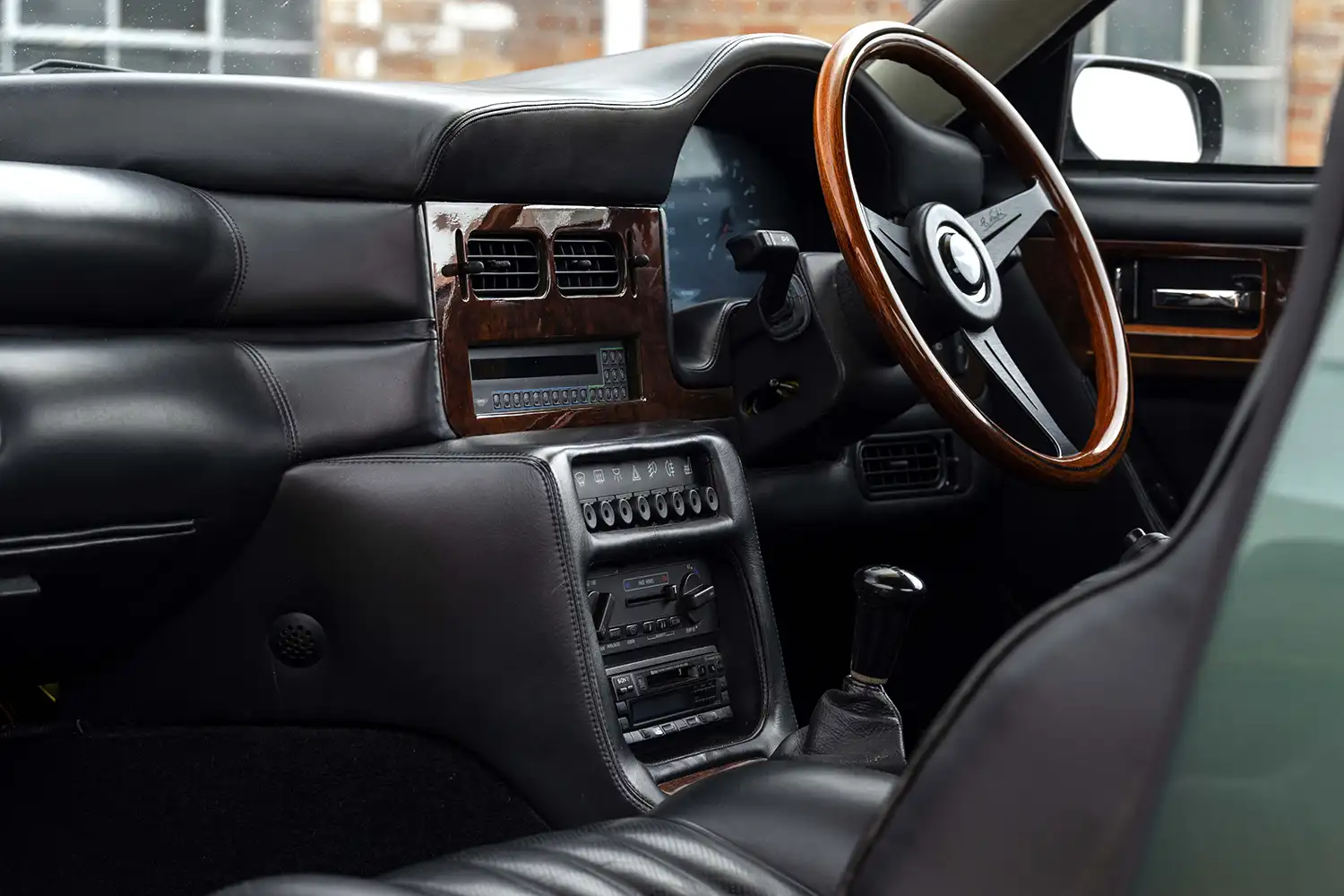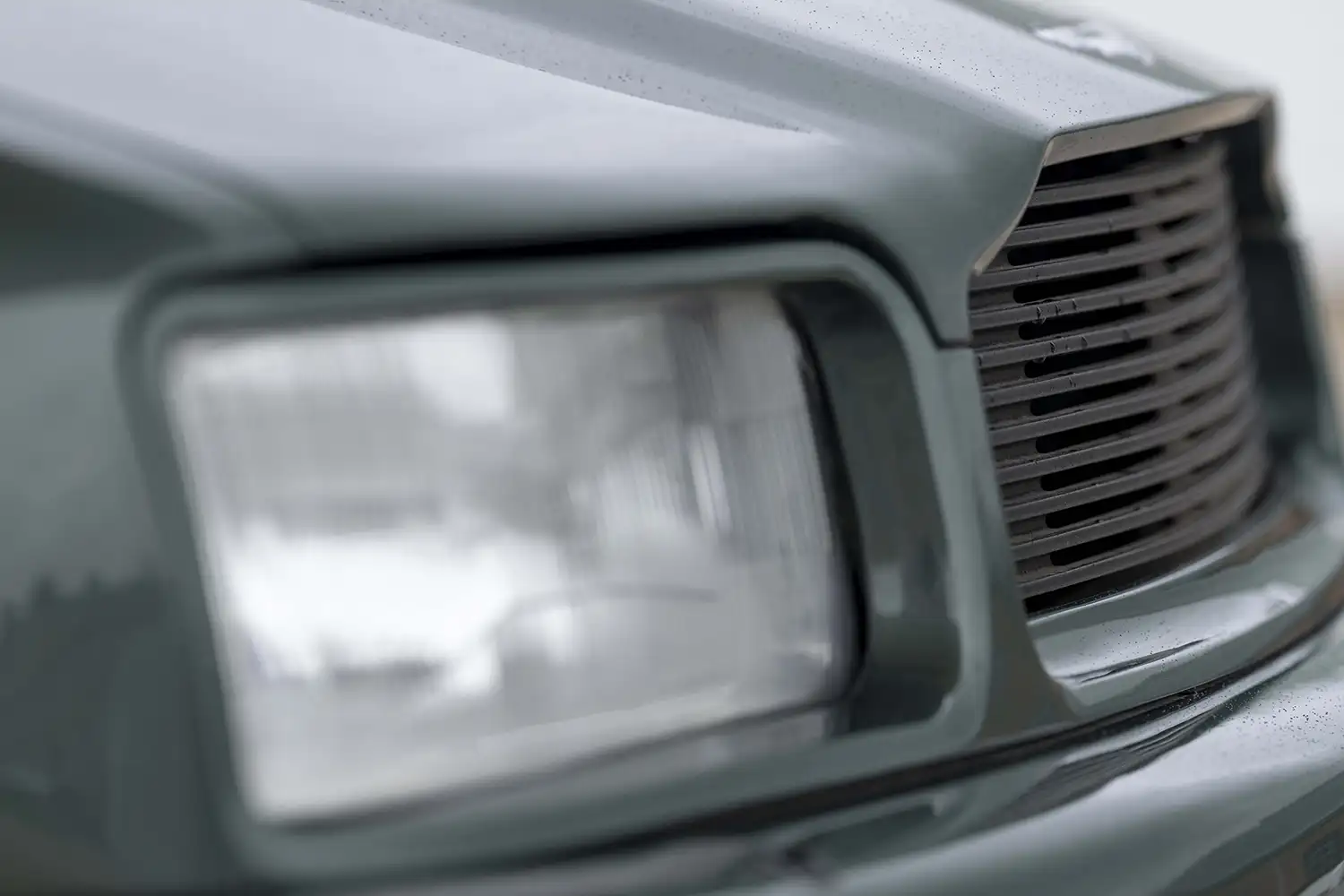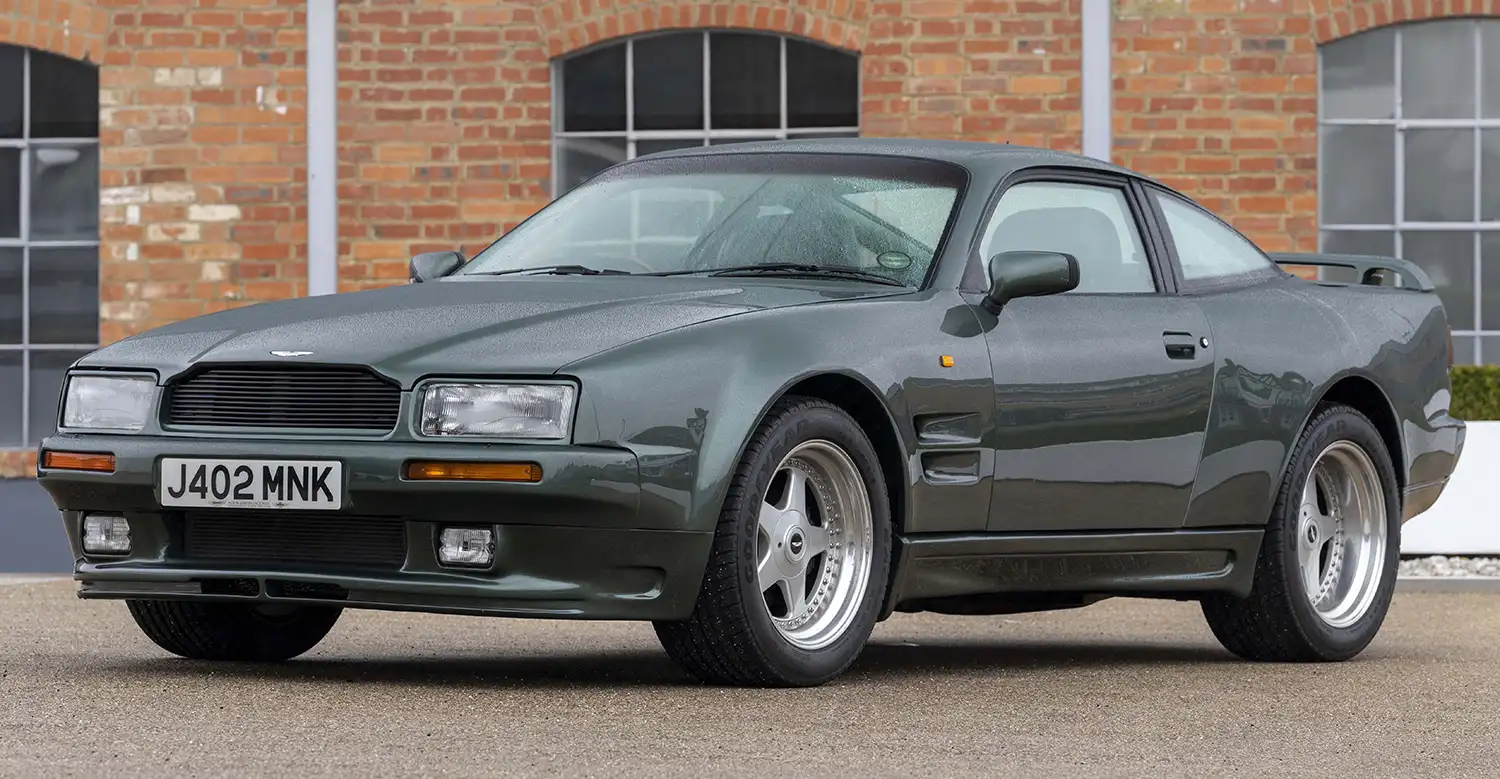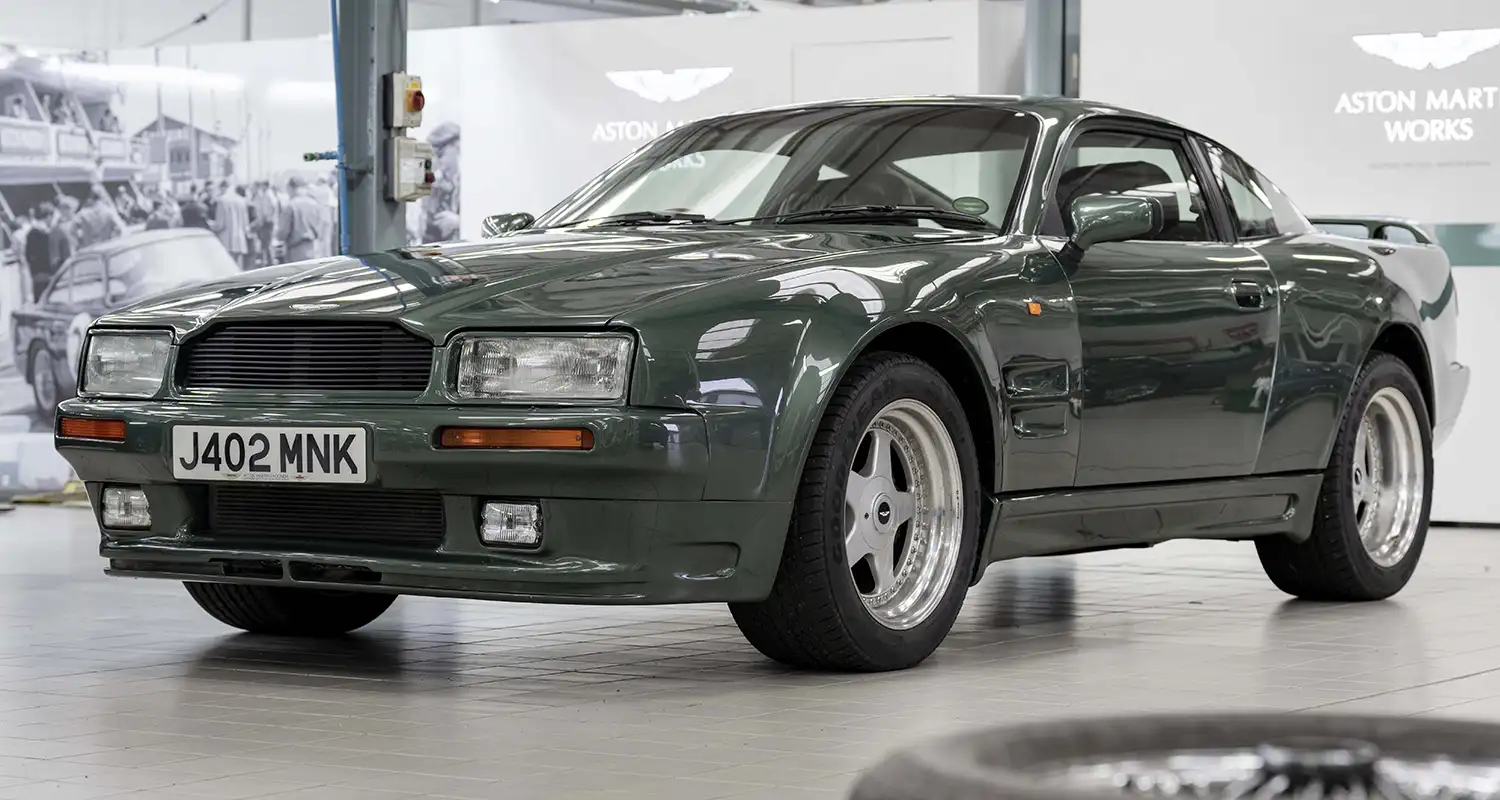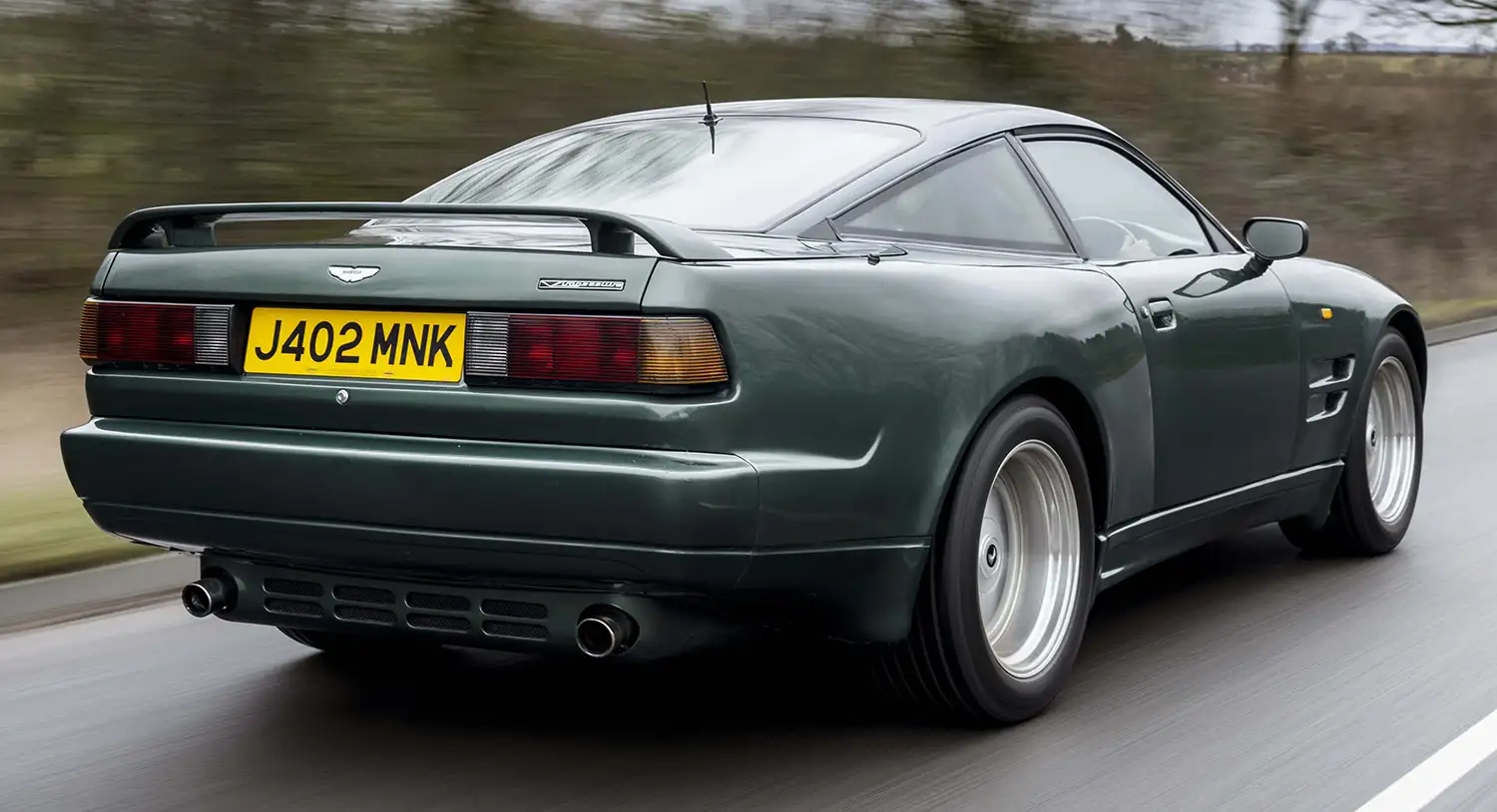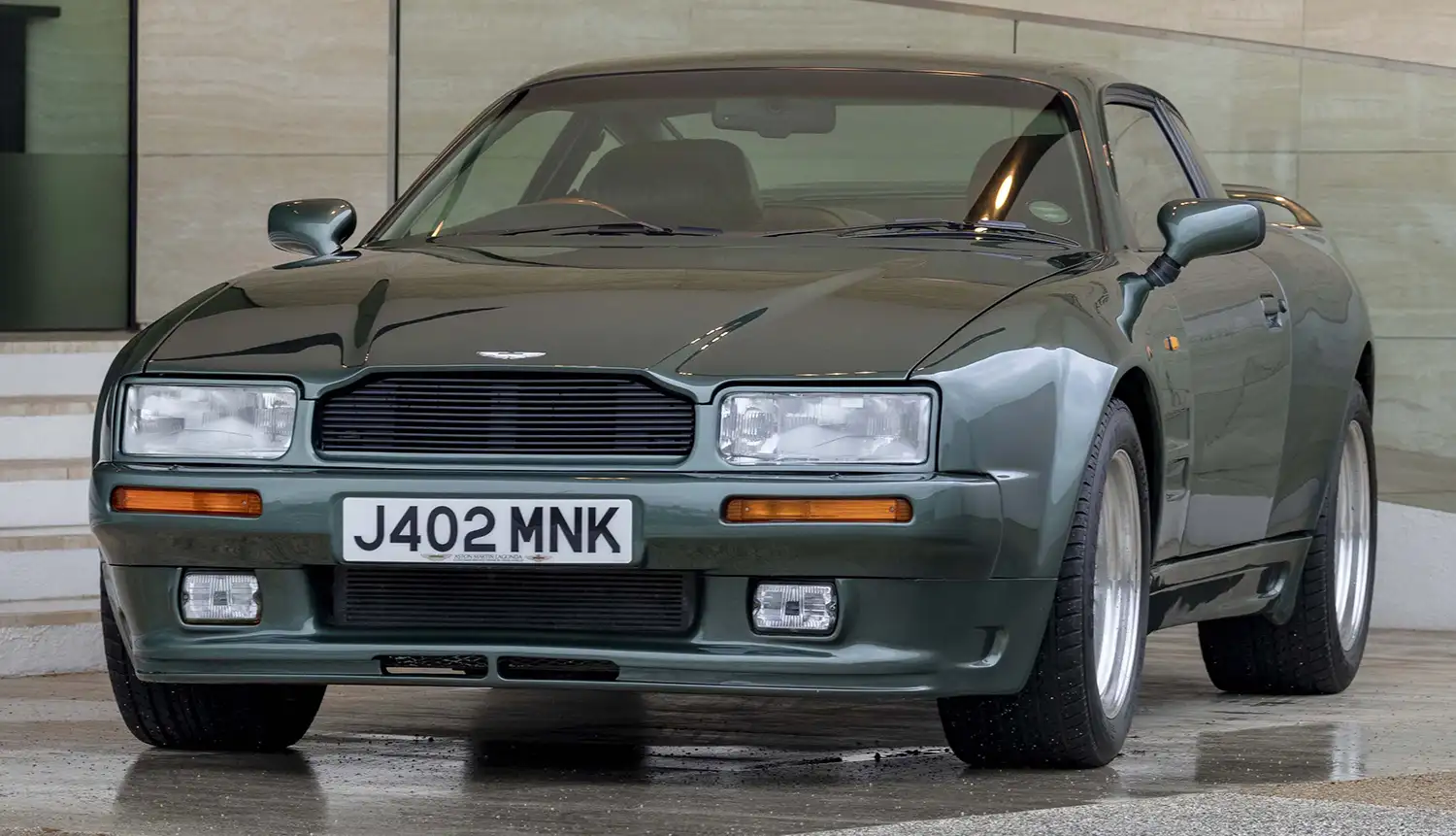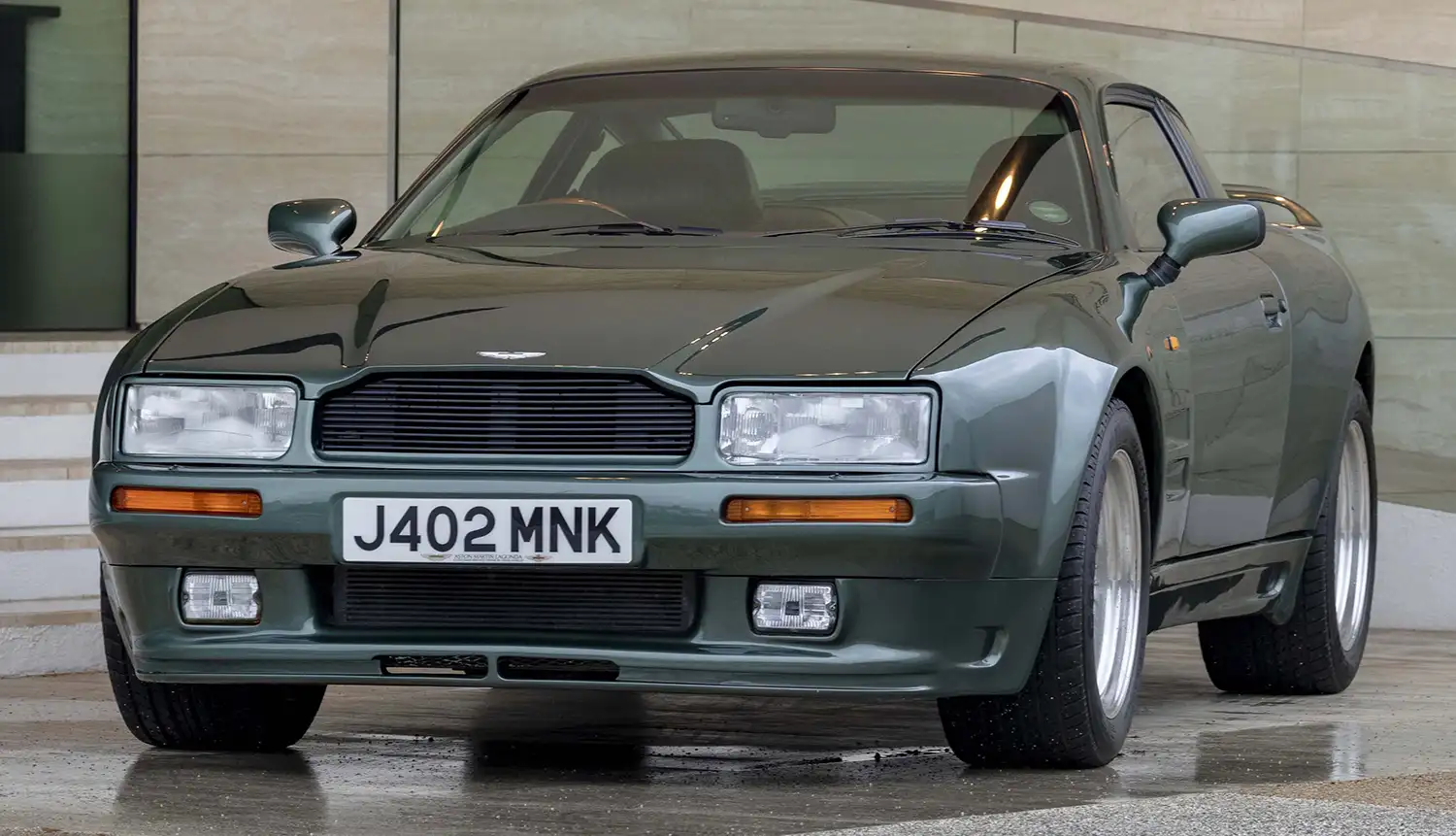
Aston Martin Works – the heritage home of the great British luxury car maker – is marking 30 years since the dramatic debut of, arguably, one of the marque’s most memorable and desired ‘niche’ models: the Aston Martin Virage and Virage Volante 6.3-litre conversion.
Created as a comprehensive upgrade package for the ‘standard’ Virage – launched in 1989 to worldwide acclaim, not least for being the first entirely new Aston Martin in 20 years – the 6.3-litre conversion was made available by the brand’s Customer Service Division – now known as Aston Martin Works – in the early months of 1992.
Embracing the ‘more is more’ ethos of the time, the 6.3-litre conversion made the Virage among the most potent sports cars of its day with suspension, braking and comprehensive styling changes complementing the huge uptick in power and performance.
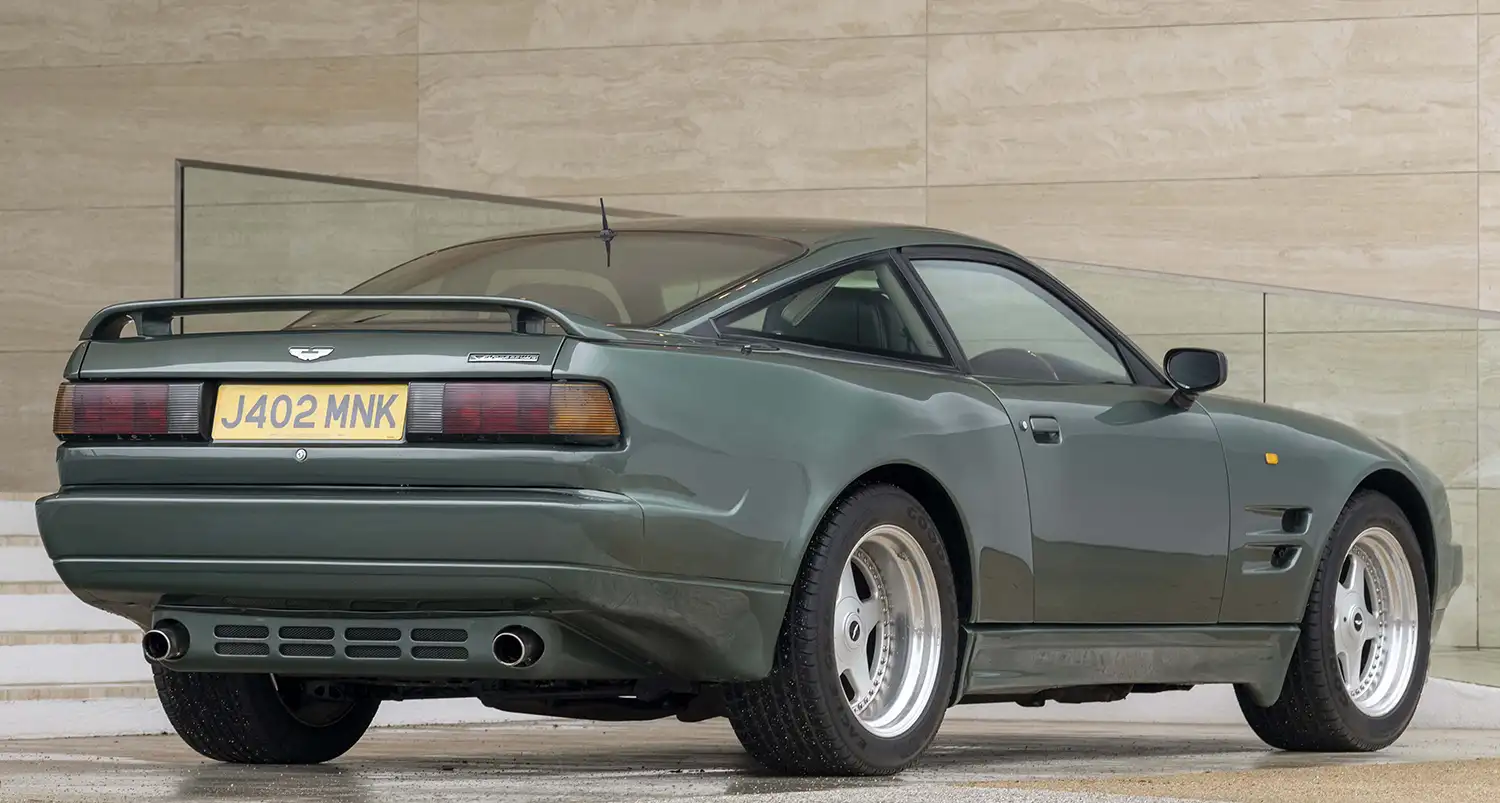
The Virage 6.3 has its roots firmly in the marque’s motorsport activities of the time. The late 1980s saw Aston Martin return to sports car racing after a 25-year hiatus with its AMR1 Group C machines contesting the World Sports Prototype Championship in 1989. The racing programme saw the capacity of Aston Martin’s all-alloy V8 increase from its standard 5.3 to 6.0 and, later, 6.3-litres. Naturally, then, when the Virage debuted with the V8 in four-valve form it was only logical that it should in due course be offered with the option of 6.3-litre power.
And what a difference that engine upgrade made! At its launch the standard Virage Coupe’s 5,340 cc V8 was good for around 330 bhp at 5,300 rpm, and 350 lb/ft of torque at 4,000 rpm – hardly modest by the standards of the day.
However, with the 6.3 conversion the Virage became nothing less than brutally powerful. That reworked 6,347 cc engine now gave 500 bhp at a heady 6,000 rpm, while torque grew to 480 lb/ft at 5,800 rpm – with 400 lb/ft of that on offer at only 2,500 rpm meaning a largely flat torque curve to boot.
The numbers are breathtaking. This 1,969 kg machine – 4,737 mm from nose to tail and a few millimetres shy of two metres wide – could sprint from rest to 62 mph in 5.1 seconds. 0-100 mph took a mere 11.5 seconds while the top speed was an entirely adequate 174 mph.
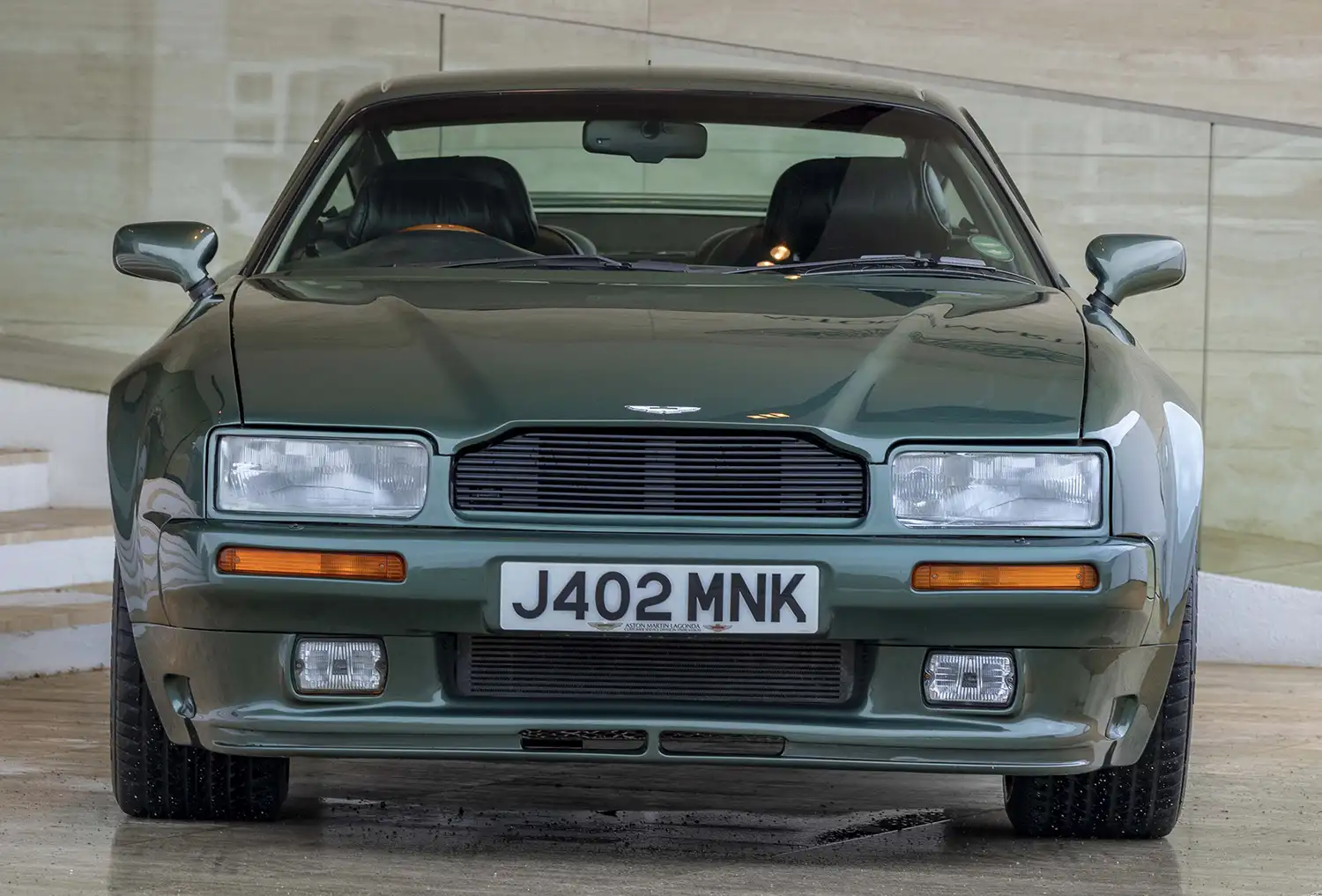
The engine featured specially manufactured Cosworth racing pistons, a new crankshaft, modified cylinder heads and new inlet camshafts. These were combined with modified Weber/Alpha sequential fuel injection, a comprehensively re-mapped engine management system and special exhaust catalysts.
Suspension and brakes
The 6.3 conversion’s dramatic increase in power and performance naturally necessitated a corresponding upgrade in the Virage’s suspension and braking capabilities.
The wishbone/coil spring front suspension and the de Dion rear tube, with radius arms and Watt linkage, featured newly-designed rose joints all round together with uprated springs, bespoke dampers, a larger front anti-roll bar, and the fitment of an anti-roll bar at the rear. Detail geometry changes and improved steering rack mountings further improved driver feedback.
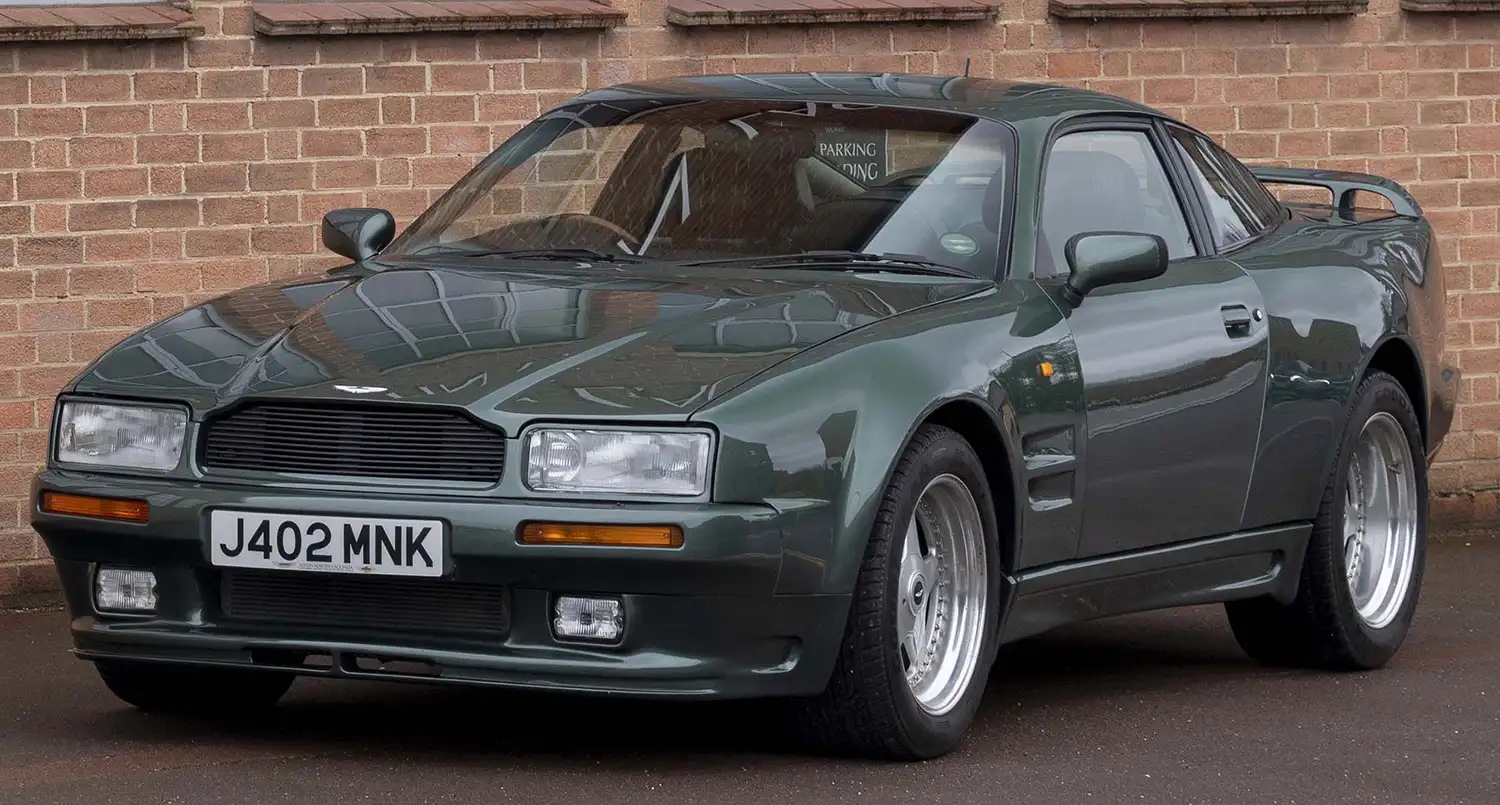
The 6.3 conversion boasted five-spoke 10.5×18-inch OZ alloy wheels while the 285/45 ZR Goodyear Eagle tyres were tasked with transmitting that prodigious power to the tarmac.
Bringing two tonnes of Aston Martin to a controlled halt from 174 mph was no mean feat, either, and to that end the 6.3 conversion was fitted with ventilated and cross-drilled disc brakes all round, derived from the AMR1 Group C sports car and featuring an electronically controlled four-channel anti-lock system. Indeed, at 14 inches in diameter the front discs were at the time the largest fitted to any production car in the world and, with their four cylinder racing calipers, provided the immense stopping power demanded by physics.
Styling
To accommodate the significantly increased wheel and tyre sizes, the standard Virage’s wheel arches were substantially flared using hand-crafted aluminium panels. These were complemented by extended side sills, a deeper front air dam, an extended rear valance and a prominent boot spoiler.
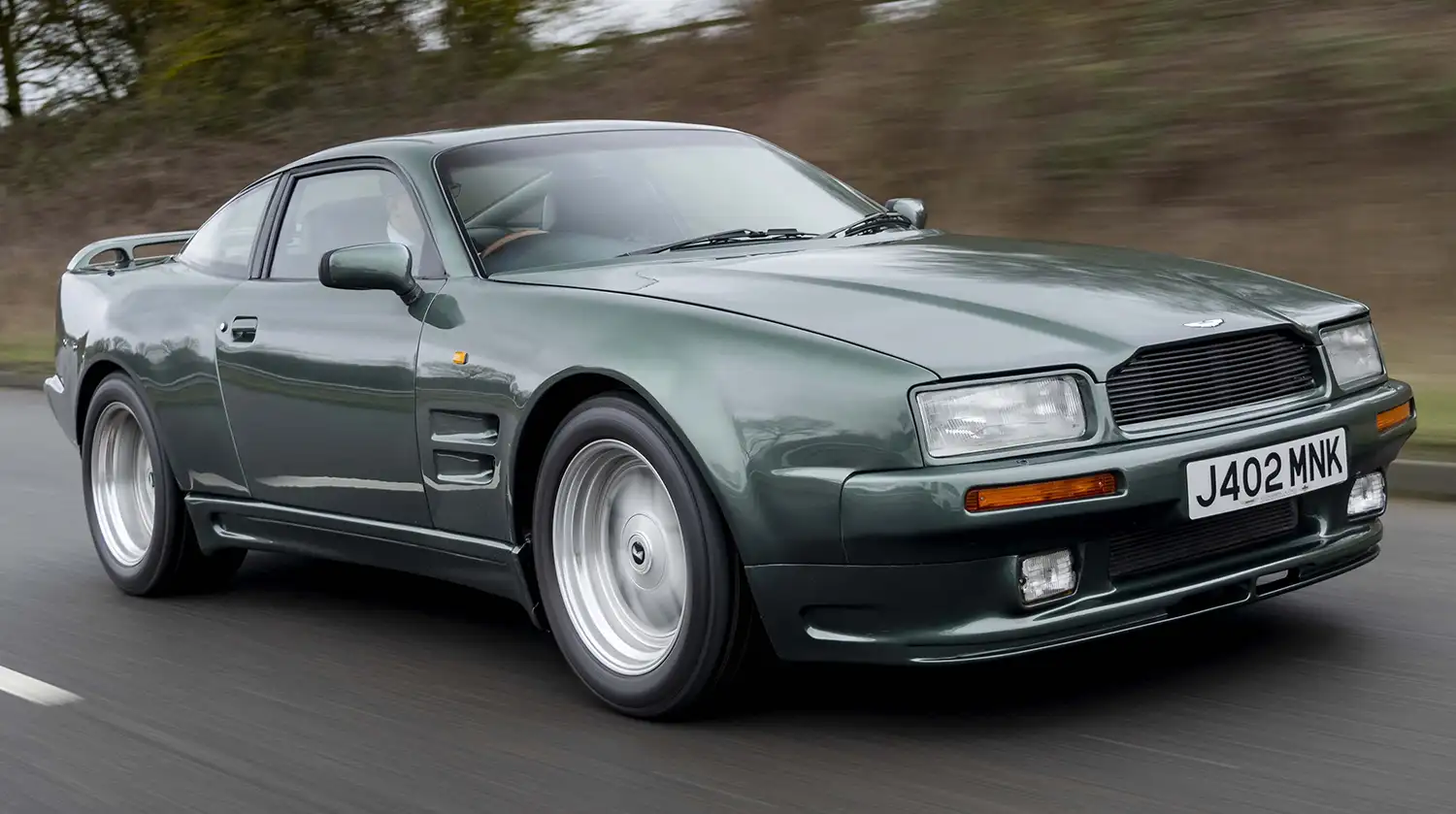
Inside, the 6.3 conversions retained all the creature comforts of the day synonymous with Aston Martin luxury such as Connolly hide trim on the seats. Options included such hi-tech features as a mini-disc player and even a mini television receiver with video monitor for rear seat passengers.
At the time of the 6.3 conversion’s introduction in 1992 the standard Virage was retailing at around £140,000 excluding options. The cost of the conversion added £60,000 to that figure.
While the precise number of Virage and Virage Volante 6.3 conversions carried out remains unconfirmed, it is thought that as many as 60 conversions were created over the course of a couple of years. The opaqueness around the number of cars built is due largely to a number of special, coach-built Virage models that carried some or all of the constituent parts of the conventional 6.3 conversion. Nevertheless, it is clear that the revisions did make a significant impact on the brand and its customers.
Aston Martin sold a grand total of 46 cars in 1992 – all Virage – and of those a good number would certainly have then visited what is today Aston Martin Works for the 6.3 conversion work to be carried out over the course of 12 weeks or so, per car.
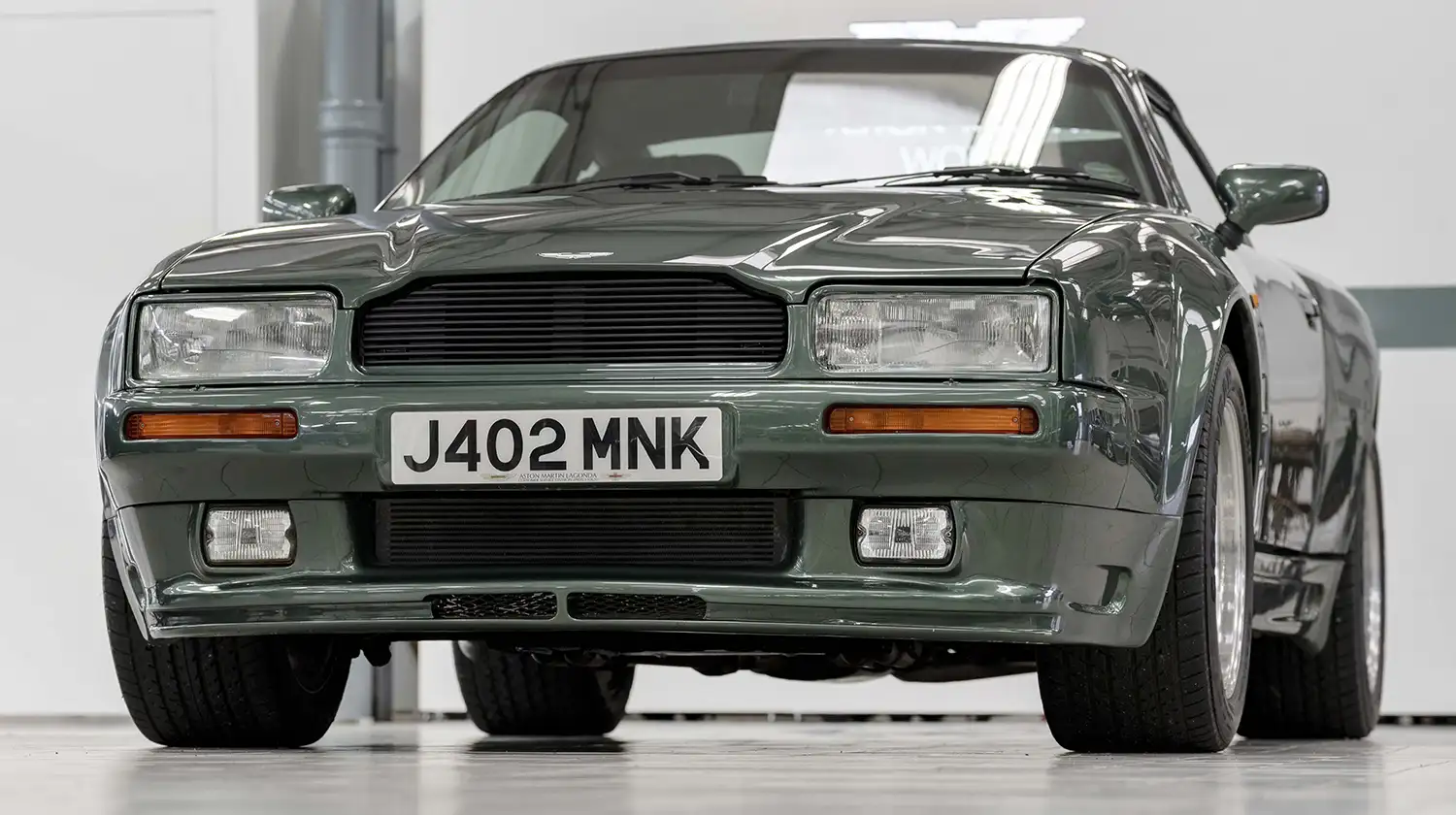
Aston Martin Historian, Steve Waddingham, explained: “The Virage and Volante 6.3 conversion came at a testing time for Aston Martin. The business had experienced a boom in the late 1980s, but with the economic downturn of the early 90s sales were harder to come by.
“This ingenious offering created by the brand’s Customer Service Division – now Aston Martin Works – not only created a huge amount of positive media interest in the marque but also provided many of our well-heeled customers with the opportunity to acquire an iconic road car with real motorsport heritage.”
Paul Spires, President of Aston Martin Works, was himself involved in the Virage 6.3 conversion project and remembers driving the development and demonstration vehicle, affectionately known today as ‘Minky’.
He said: “The Virage 6.3 conversion was, and remains, a superb example of the capabilities of the department that is now Aston Martin Works.
“The car was comprehensively re-engineered, and restyled, right here in Newport Pagnell. It remains a true testament to the ingenuity and vision of the Aston Martin business and I’m thrilled – but also a little shocked from a personal point of view – that we are able to celebrate its 30th anniversary in 2022.”
